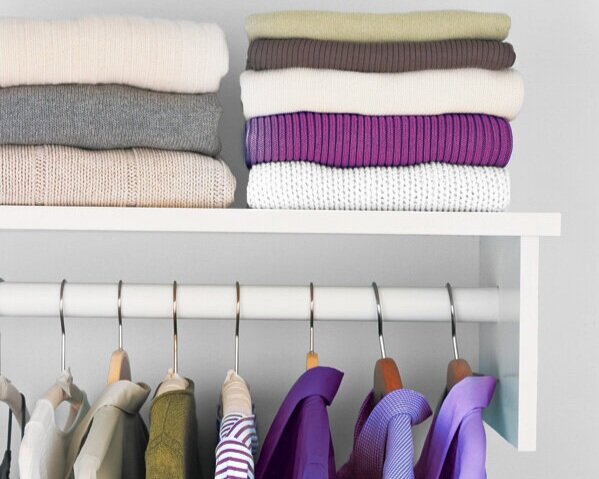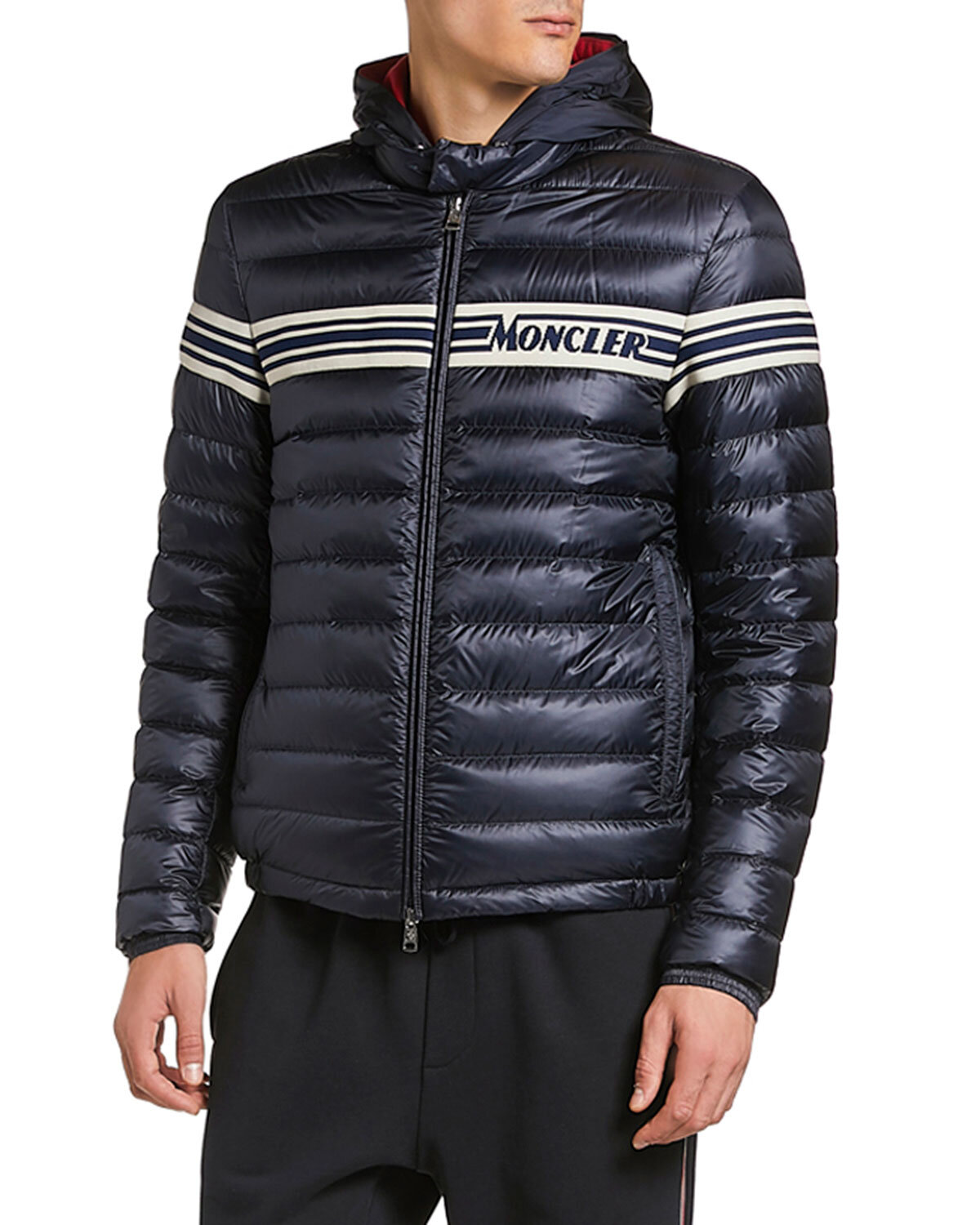Transitioning to Winter – the What-to-Wear for your Wardrobe
With the arrival of what is perhaps the largest snowstorm that New York has seen in years, it’s officially time to put away the light fall jackets and bring your warmest winter coats out of storage. But don’t put away everything just yet – let’s talk about the classic fall-to-winter staples to keep in your closet and how to store the garments that won’t stick around for the winter (we know the weather has its own mind and can pull a 180 pretty quickly!).
Storing Clothes
Meurice has worked with clients to store clothing for years. This year is a bit different. Instead of storing, we are educating on how to store better as the pandemic prevents us from providing storage services. When it comes to storing clothes, having unneeded garments out of sight makes it simpler to choose outfits and keep them organized. You’ve been there – simply having too many things in your wardrobe can cause decision fatigue, especially if your closet isn’t Imagine It Done standards. Proper storage reduces visual clutter, that way it’s easier to make decisions about what to wear. It can also be almost like revealing a new wardrobe every season, making for nice little reminders of, “Oh, I forgot I had that!” It also gives you four opportunities to donate and replenish (Excuse to shop while giving back? Yes, please.).
Here is the biggest consideration (and hack!) before you store your garments – clean them. Didn’t you see this one coming?
Benefits:
Pests, like moths and clothing beetles, love body oils and food residue, so it’s important to make sure everything is nice and fresh before you put them away...or else you could unpack things for spring with huge holes.
At Meurice, if you let us know you’re preparing for storage, we will pack your garments and linens away properly. That way, all you have to do is drop it right into your storage or attic.
How to Store
The best storage option for most clothing is airtight plastic containers. This ensures that pests, water and dust particles can’t get in. For some textiles, like leather, it’s better to store them in breathable containers, like a garment bag or a zippable container made of breathable fabric. The reason being that leather can mildew incredibly easily, and if left in airtight containers, any moisture can ruin them.
Try storing things where you can check on them every once in a while, as well as in a dry place where they can remain at a consistent temperature. Checking on them will help you detect pesky things like moths before it gets worse. Try under a bed or on the top shelf of a closet, or perhaps in a garage or attic away from harmful chemicals. Cool temperatures are better because heat has more adverse effects on fabrics.
Fold or Hang?
Always fold clothes to store them – hanging for long periods of time can cause the weight of the material to result in stretching or dimples, no matter the fabric. You can give them a good iron or steam when you take them out in the spring.
Thinking Through your Winter Wardrobe
The best bet to keep warm in the city’s tough winters are your classic, quality coats. It’s best to rotate them out, and keep them all handy.
Sherpa
Sherpa (sometimes also called a “teddy” coat) is usually used to describe faux-shearling, and “shearling” usually means lambskin with the wool still attached, worn with the wool on the inside. If you’re not a fan of lambskin for ethical reasons, sherpa is a great alternative that’s a bit easier to clean, but just as warm. Its unique piled look makes it stand out against other types of coat material, and it recently has become popular worn on its own – not paired as the inside of another material. They’re stylish, go-with-anything staples to keep in your winter closet.
Peacoats
Peacoats are a winter staple – everyone should have at least one! The “pea” is actually a reference to the original cloth they were made from, a fabric called “pilot cloth,” shortened to “p-coat,” then, somewhere along the line, “pea coat.” They’ve been used since the 1720s, and are often made of heavy wool. Pea coats are good to have around for you more formal occasions – they have a classic, timeless piece and look great with dresses or suits if you’re going out for a casual outdoor dinner with your partner. Simple and très chic.
Puffers
Best for incredibly cold weather, down-insulated puffer jackets are the way to go – especially if they’re long. Often waterproof and windproof, they stand up to the coldest of New York winters. The cropped puffer has also become popular when you’re making a quick run with your pup, to the grocery store, or even actual runs. Since these are the most commonly worn outer jacket, consider a quality one.
Trenches
If you’re into making your coat your full statement look, trenches make a great one-and-done approach to cold weather. Think: the classic Burberry coat. Keep them around for the coldest days because they’re a guarantee to keep your entire body shielded from brisk New York air. They’re also nice to pair with long skirts and dresses, and you don’t really have to worry about matching!
Fur (and Faux Fur)
Fur, in any form, is very warm, but it doesn’t stand up to wetter days. It might not be the most practical option for casual, everyday wear, but it definitely gives you the glamorous New York statement everyone needs on a dreary day. You can keep it around for your occasional nights when you’re feeling fancy, or when there’s no rain in the forecast. If real fur isn’t for you, faux fur works just as well when it comes to warmth and looks! Both real and faux fur needs to stay very dry, and any humidity or liquid can cause damage. Make sure you check the forecast before heading out in these.
Accessories
Scarves! Hats! Gloves! Oh my! The best accessories match the rest of your winter wear. Chunky scarves keep you warm while spicing up your outfit. Had some fun accessories you were planning on wearing to the ski resort this year? Wear it out for a walk through Central Park!
Cashmere scarves are the most common among our clientele. Be careful of wearing this out if there’s rain in the forecast. Classic Irish wool scarves are a staple that never go out of style. Blanket scarves and shawls are perfect for winter outdoor dining because they can literally be converted into a blanket if you’re feeling chilly. Each serves its own purpose, so it’s not a bad idea to invest in one of each. Opt for woven or woolen fabrics, rather than thin cotton or synthetics.
Onto hats. Tight beanies keep your ears nice and warm, so they’re a good go-to. Or, a fun pom-pom hat. Anything over your ears is better than nothing, but like scarves, stick to woven, thicker fabrics. If you want to be able to wear your hair up while wearing a hat, opt for a woven headband!
Down to the hands. Shoot for gloves that wick away moisture, like waterproof poly neoprene or wool. Avoid gloves lined with cotton, because they tend to absorb and keep moisture, and your hands are one of the most sweaty places on your body. That moisture stays in the fabric, making your hands cold. For the outer layer, dense fabrics keep your hands warmer – like leather, poly neoprene, or fleece. Avoid cable-knits or other chunky knits as they are porous.
Final Takeaways for Your Winter Closet
Be versatile – Don’t forget the option of tights with boots under shorter garments, so you don’t have to put away all those summer skirts and dresses.
Keep neutrals around – you can put away the floral prints and bright colors, but hold on to neutral colors to layer and wear under other clothing. Stick to soft, solid colors, or more burnt colors, like maroons or dark greens. No shame in pulling out the brightly-colored accessories, but winter wear is expensive, so picking neutral tones can ensure they don’t go out of style and will stay around for years to come.
Layering – try tights under jeans and other pants for an effective, discreet way to stay warm. Also, layering turtlenecks under tanks for a fun way to still wear your cute summer tops.
Keep light jackets around for warmer days, like denim or leather. If we learned anything from this fall, it’s that sometimes unseasonably warm weather shows up without warning.
Keep cardigans around for quick trips outside or cozying up inside.
Turtlenecks – you can never have too many! They’re perfect for layering under anything and everything.
Natural fibers are usually the warmest, like wool, cashmere and mohair. They’re the hardest to wash and keep up, but that’s where we come in. We’ll take great care of all your winter wear. Natural fibers also hold up better than synthetic ones, so opting for wool can keep you warm for years to come.
When you need someone to keep all your bulky winter wear clean, that’s where we come in. Give us a call when your finest coats need a good dry cleaning, or when you’ve got too much going on to get the laundry done. You don’t even have to go out in the cold – delivery is always complimentary. Give your winter garments the Meurice Touch.




